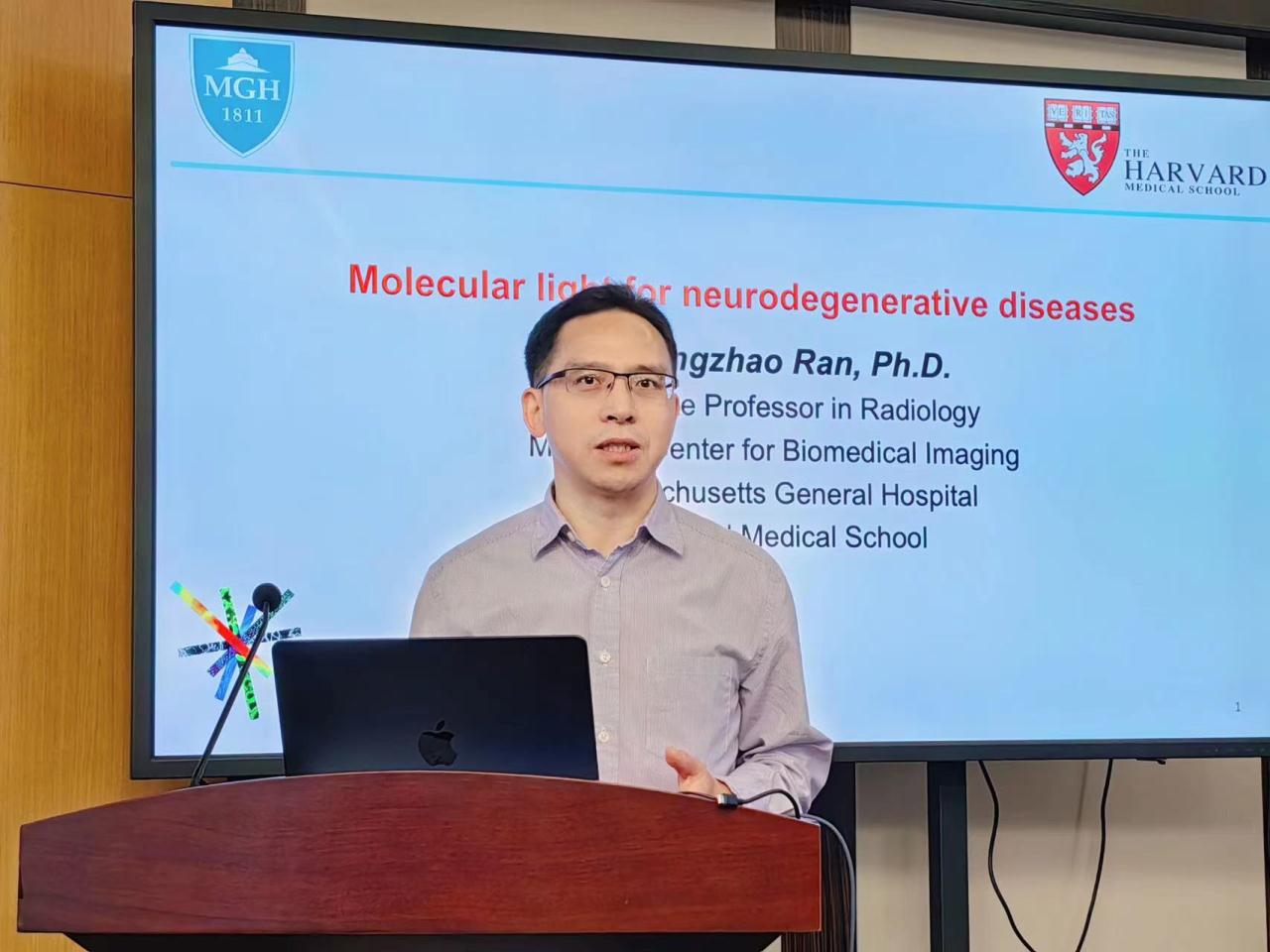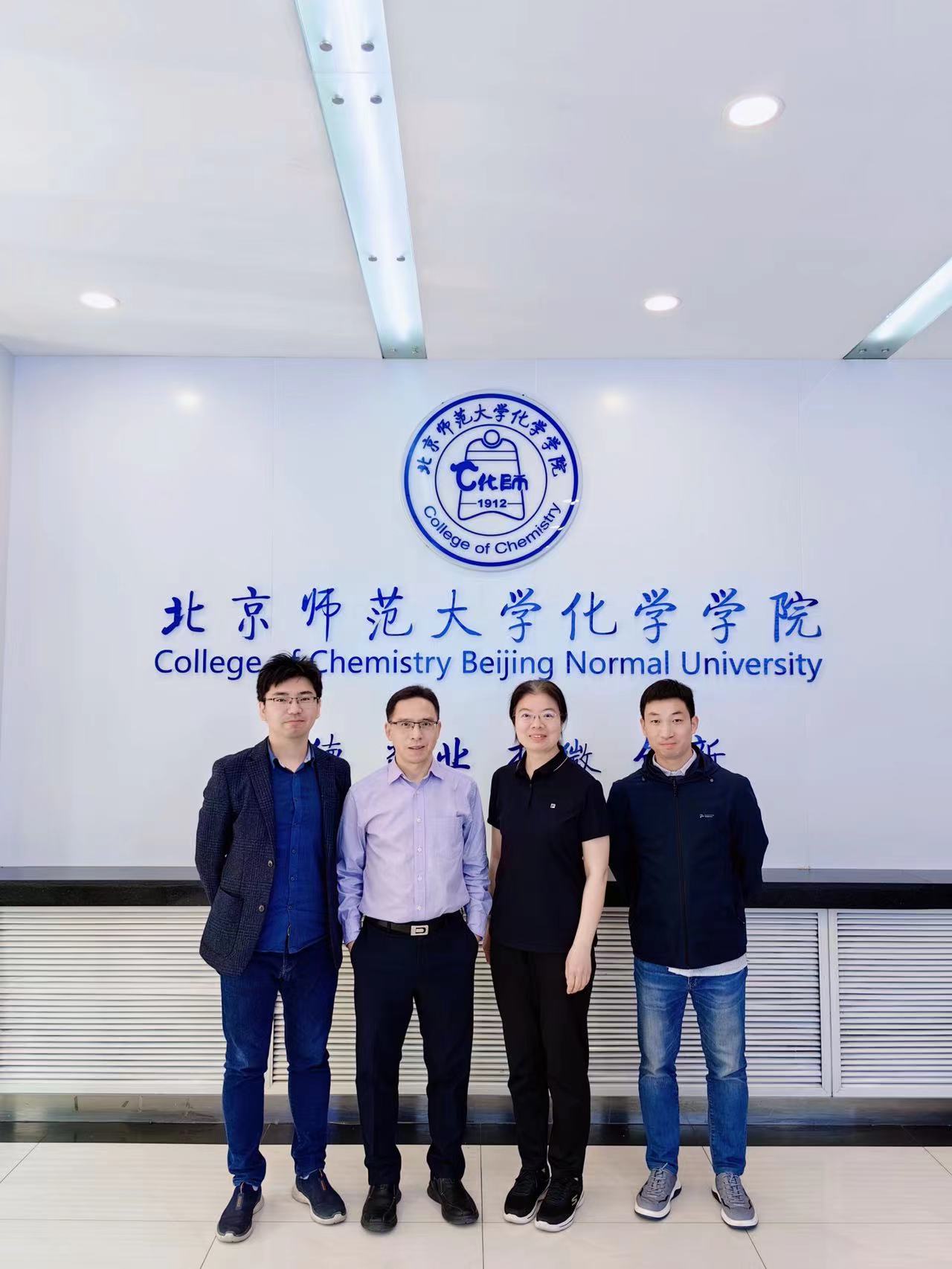
 位置: 首页»
新闻动态
位置: 首页»
新闻动态
来自Massachusetts General Hospital and Harvard Medical School的Chongzhao Ran博士于5月2日上午9:30在化学学院二楼会议室进行了学术报告,报告题目为Molecular light for imaging and therapy in neurodegenerative diseases。
报告内容主要为:
Light can not only be produced physically from various devices, such as the commonly used incandescent light bulbs and LED lights, but also can be generated molecularly from chemiluminescent and bioluminescent compounds, and Cerenkov luminescent tracers, such as luciferins, luminol, and 18F-FDG, respectively. We dubbed the molecularly generated light “molecular light”. In this talk, the application of molecular light for imaging of misfolded proteins in Alzheimer’s diseases and Parkinson’s disease will be presented.
For in vivo phototherapy, physically produced light has its well-known limitation of tissue penetration, and hurdles of delivery to target-of-interests beyond shallow locations, such as skin. By contrast, molecular light has nearly limitless tissue penetration and can be delivered to targets as molecules. In this talk, molecular light for in vivo AD therapeutic studies will also be presented.
通过此次报告,大家对神经退行性疾病的化学发光和生物发光探针有了更深刻的了解,对药物研发有了新的启示,开阔了科研新思路。


